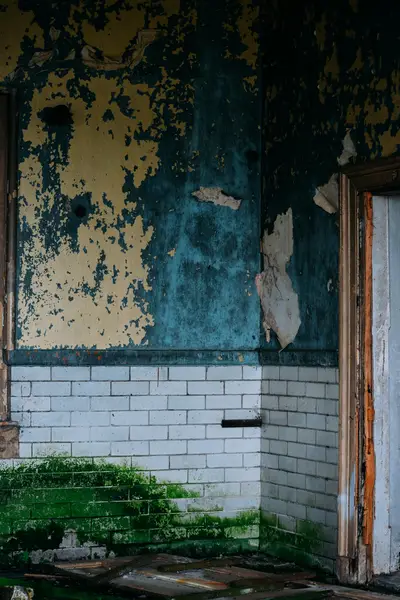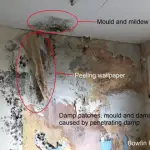
So you’re excited about buying a house only to find out from the survey that it has a damp problem. With this scenario, excitement can soon turn to worry.
But should you buy a house that has damp? It’s okay to buy a house that has damp. But before you do, make sure you know what’s causing the damp problem and how much it will cost to fix it. Get a specialist damp surveyor or a builder to check into the problem. Decide whether to get the seller to fix it before you buy or take the cost off the purchase price.
Most damp problems are easily fixable and in most cases a compromise can be reached the between buyer and seller. So let’s take a look at this problem in a bit more detail.
Is it worth buying a house with damp?
It is worth buying a house with damp, but you shouldn’t do so without the cost of its repair being taken off the price of the house. Or ask the seller to fix the problem first.
Depending on the problem that’s causing the damp, the cost of repair can be quite high. But on the other hand it may be a simple and lost cost fix.
It’s also not only about the cost associated with repairing a damp problem. But it’s also about how disruptive this can be too.
If you’re in a sales-chain you may not have time to have the seller fix the problem. Which means if you are keen to proceed to buying the house, your best option is to deduct the cost of repairs from the price.
So let’s take a look at the types of damp you may find in a house and in each case whether it’s worth buying.
- Buying a house with condensation.
- Buying a house with penetrating damp.
- Should you buy a house with rising damp?
- What about buying a house with plumbing problems?
- Buying a house with damp basement.
1. Buying a house with condensation
There’s probably no reason why you shouldn’t buy a house with a condensation problem as often times the cause of the condensation is easy and cheap to fix.
Having said it does depend if the condensation problem has been left unchecked for a while and has caused other associated problems with the house.
What causes condensation and how is it fixed?
Condensation is normally caused when moisture filled warm air hits a cold surface like a window or cold wall.
It occurs in bathrooms from using showers, in utility rooms from drying clothes or from cooking in the kitchen. The problem is usually resolved by fitting better extraction or by fixing what’s already in place.
2. What about buying a house with penetrating damp – is this worth it?
It’s okay to buy a house with penetrating damp if you know what’s causing the problem, plus what it will cost fix the it.
Don’t pay the full price for the house you agreed before you discovered the penetrating damp. But renegotiate the price by at least deducting the cost to repair the issue and any associated costs.
Your final decision whether to buy a house with penetrating damp will depend on any other damage caused by the damp problem. This is because if penetrating damp is left untreated it can cause problems for the structure and fabric of the property.
Its important to find out the extent of the damage before you proceed with the purchase.
What is penetrating damp in a house?
Penetrating damp problems are caused by moisture working its way laterally through the exterior of a property.
This can be caused from defects to roof coverings, leaking gutters or down pipes or from issues related to external pointing or rendering. Signs of penetrating damp can be seen on internal walls or ceilings.
This is of course unless the vendor has tried to hide the damp problem. However, even if this is the case, a good surveyor should be able to pick up on any penetrating damp problems.
3. Should you buy a house with rising damp?
The only reason for not buying a house with rising damp is if the buyer is not prepared to deduct the cost of repair from the price of the house.
Rising damp is actually very rare. Damp problems thought to be this are often not rising damp at all. But are often condensation or penetrating damp instead.
Your first problem is to agree with the vendor to have a professional survey done on the damp problem picked up. This is to confirm if the damp is indeed rising damp.
But be aware that many of the so called professional damp proofing companies send out a so called surveyor who is actually a salesman. This means that unfortunately they are paid a commission per sale.
That means they only get paid if they diagnose a damp problem that requires an expensive fix, like rising damp. This means they often confirm the house has rising damp, even if it doesn’t.
Can you get a mortgage on a house with rising damp?
In some cases of rising damp mortgage lenders will not lend until the damp problem has been treated or repaired.
Alternatively, lenders put a retention on the mortgage until such time as the damp problem has been fixed. With sever damp problems the seller will either need to carry out the work or sell to a cash buyer.
If the lender you chose does not hold retentions, they may refuse to lend until the damp has been treated. Which means either getting the seller to do the repairs or you need to find another lender that will lend on the property.
If you are in a sales-chain you may not have time for the damp problem to be fixed, in which case an alternative lender may be the quicker option. But either way you want to agree with the seller that the cost of repairing the damp will be their cost.
4. What about buying a house with plumbing problems that are causing damp?
It’s okay to buy a house that has plumbing problems, but you want to be sure these are either fixed beforehand or the cost of repair is taken off the price you pay for the house.
The most common plumbing problems include clogged drains and toilets or leaky taps (faucets) and pipes which are all relatively cheap to fix.
A leaking pipe can cause damp problems. For example, a damaged copper pipe underneath a concrete floor will cause major damage to a house and may not always be found right away.
The seller may not even know they have a problem until the mortgage survey picks it up.
Examples of other types of damp problem being wrongly diagnosed as rising damp in houses:
- A leaking gutter that was dripping and causing water to splash up onto an outside wall had caused an internal damp reading. This was wrongly diagnosed as rising damp. When in fact this was penetrating damp.
- A house had new plaster put on internal walls. But before the plaster had dried properly, the vendor wallpapered over the damp plaster. This was recorded as rising damp when in fact the walls simply needed to dry out.
- A house with a void under the house had the vents blocked up. This caused major damp problems with the house, whereby damp was rising up in the walls. Whilst this was effectively rising damp, the fix was easy and at very little cost.
- A house had a garden raised above the damp proof course. This meant that damp penetrated into he fabric of the house. Whilst this is technically rising damp combined with penetrating damp, it is an easy fix. It would require the garden to be lowered back down below the damp proof course.
5. Buying a house with damp basement
If you intend to buy a house with a damp or wet basement or cellar you need to know this can be very expensive to fix if you intend to use it as accommodation.
The way to fix a damp or wet basement is to tank it with a waterproof membrane. You could try to renegotiate the house sale price to take account of the this cost.
To create accommodation space out of a cellar or basement requires the ceiling to be of adequate height. If this isn’t the case, then in addition to tanking the cellar, you’ll also need to dig down to create extra height.
Doing such a renovation won’t be cheap. It also needs to be done with care to avoid disrupting or damaging the structure of the building.
What to do if the seller doesn’t agree to deduct the cost of repairing the damp
If the seller doesn’t agree to deduct the cost of repairs for the damp found on the mortgage survey you should walk away from the property.
This is unless the price you’re paying is already a very good price at under the market value. Or if for whatever reason you absolutely have to have the house.
I hope you’ve got something from reading this article about should I buy a house that has damp
If you’ve got something from this article about “should I buy a house that has damp” please share it on your favourite social media site.
Also, if you have any questions, please feel free to comment below too. Alternatively, if you need more help, please feel free to contact us on our contact us page here. Or join the discussion and ask your question in the property forum.





Hi I’m buying a house which has just had a survey and the report has come back with rising damp. I did agree the sale as 5000 under the asking price as I thought it was over valued. Can I still ask the vendor for a reductio due to the issue with damp?.
Hi Michelle, thank you for your comment and question. Yes of course you can, as there’s a difference between what you agreed to buy the house at between you and the vendor before you knew abut the damp problem. In other words, what you were paying for the house was as if it didn’t have damp. However, the vendor doesn’t have to agree to the reduction, but if they don’t and you pull out, the problem is likely to raise its head again in the future for them.
Does the vendor know about the damp yet?
It’s possible you could get the vendor to do the works instead of you doing it after you buy. But if they do the work, make sure to have the worked checked and/or agree between you who does the work. Arguably, if you are going to do the work yourself after you move in, the reduction should be more than the cost of the works, due to the disruption etc. Whereas if the vendor does the work, there’s no reason why you wouldn’t then pay the price you’ve already agreed.